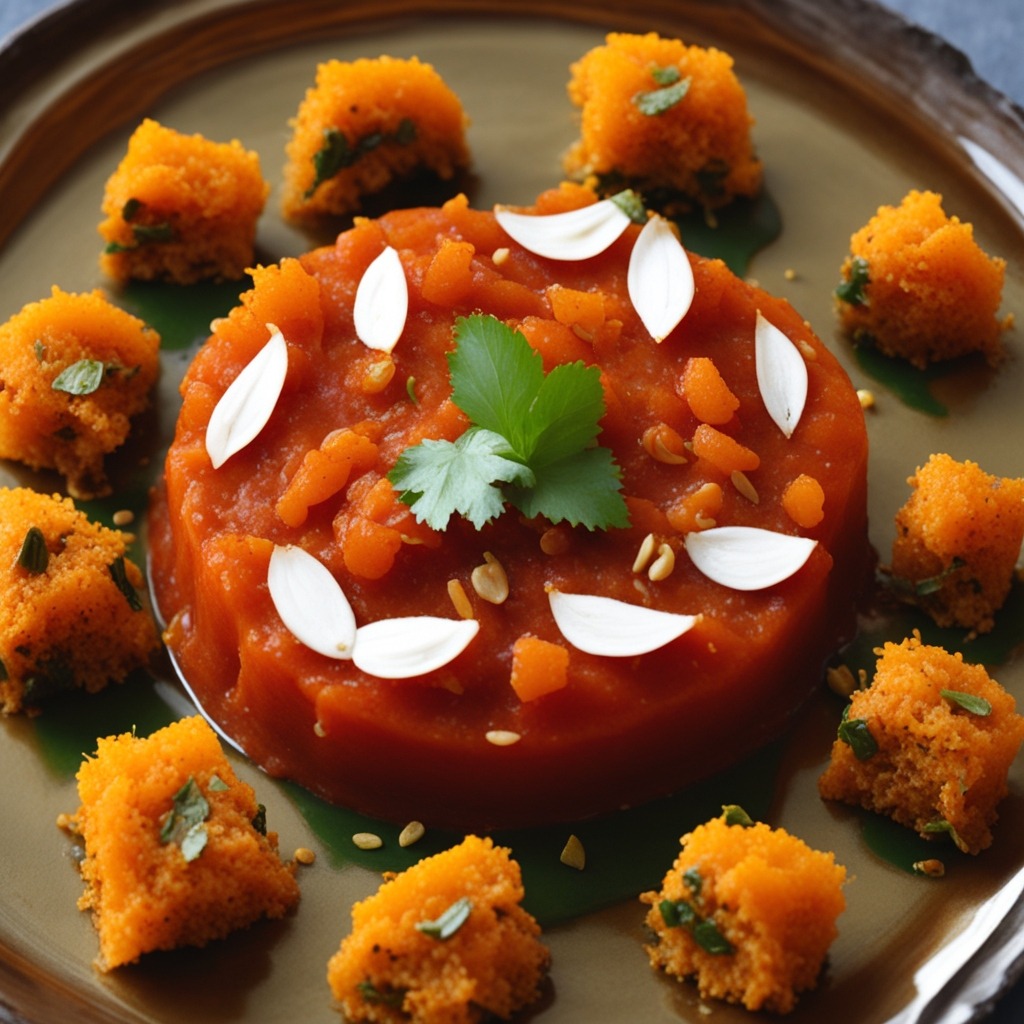In the heart of every Indian kitchen, especially during the winter chill, Gajar Ka Halwa emerges as a timeless treasure, weaving a culinary narrative that traverses generations. This delectable dessert, born from the simplicity of carrots, unfolds a saga that marries tradition with a contemporary flair, creating an epicurean masterpiece that transcends time.
The overture of Gajar Ka Halwa begins with the careful selection of carrots, not just as an ingredient but as protagonists in this culinary tale. The vibrancy of orange hues speaks of the seasonal harvest, setting the stage for a symphony of flavors that will soon unfold.
Tradition meets innovation as the rhythmic grating of carrots takes on a modern cadence, blending the authenticity of handcrafted love with the efficiency of contemporary kitchen gadgets. The essence of the dish remains intact, echoing the whispers of kitchens past, yet resonating with the pulse of the present.

The main act commences with the slow dance of carrots and ghee, a ritual that once played out on traditional stovetops now finds expression in the embrace of state-of-the-art cookware. The alchemy between time-honored techniques and modern appliances creates a harmonious fusion, preserving the soul of Gajar Ka Halwa while catering to the demands of a fast-paced world.
Milk, the backbone of this sweet symphony, remains true to its heritage while embracing diversity. Traditionalists revel in the velvety embrace of dairy, while those seeking alternatives find solace in almond or coconut milk, adding layers of richness to the narrative.
The spice palette, a chorus of cardamom, nutmeg, and cinnamon, takes a daring leap into the avant-garde with unexpected twists. The aroma that wafts through the kitchen transcends time, bridging the gap between nostalgia and contemporary experimentation.
Nuts, once a predictable cadence, now surprise and delight with unconventional choices like hazelnuts and pine nuts. The garnish, once a simple sprinkle of pistachios, now boasts the avant-garde allure of edible flowers or microgreens, elevating the presentation to an art form.
The sugar saga, a pivotal chapter, has witnessed a revolution. While traditional sweeteners still play a leading role, the emergence of honey, agave, or date syrup adds a modern touch, appealing to the evolving palates of a health-conscious audience.
In conclusion, Gajar Ka Halwa unfolds as more than a dessert; it is a culinary odyssey, a journey through time and flavor. As we savor each spoonful, we partake in a story that transcends generations, embracing tradition and innovation in a harmonious dance that encapsulates the spirit of Indian gastronomy. Gajar Ka Halwa, a symphony on the palate, beckons us to celebrate the past, relish the present, and anticipate the flavors yet to unfold.